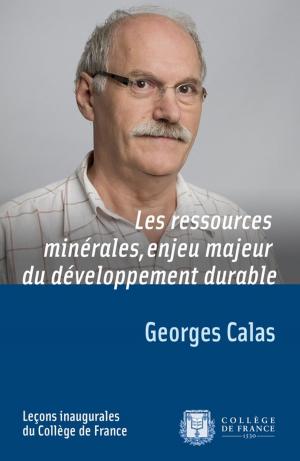The Eastern Desert of Egypt during the Greco-Roman Period: Archaeological Reports
Nonfiction, History, Civilization, Ancient History| Author: | Collectif | ISBN: | 9782722604889 |
| Publisher: | Collège de France | Publication: | September 14, 2018 |
| Imprint: | Collège de France | Language: | English |
| Author: | Collectif |
| ISBN: | 9782722604889 |
| Publisher: | Collège de France |
| Publication: | September 14, 2018 |
| Imprint: | Collège de France |
| Language: | English |
The Eastern Desert of Egypt extends over a vast area of mountains and sandy plains between the Nile and the Red Sea. Its natural riches –gold, gems and high quality stones (such as granite from Mons Claudianus, Tiberianè or Ophiatès, porphyry from Porphyritès, basanites [greywacke] from the Wâdi al-Hammâmât, etc.)– have, despite the difficulties due to harsh climatic conditions, been exploited since the Predynastic period. The Pharaohs, the Ptolemies and the Roman emperors often sent expeditions to extract these minerals and stones. The desert was also a passageway for all sorts of traffic coming from countries bordering the Red Sea and the Indian Ocean. Expeditions and commercial activities, which started from time of the Old Kingdom, greatly expanded during the Ptolemaic and Roman periods. Trade focused on spices initially, fragrant resins and gems, then in the Roman period, on a wide range of exotic products including pearls, precious stones, fabrics, etc. The archaeological sites of this region were practically inaccessible for logistical reasons until recently and they were, until now, exceptionally well preserved. Between the late 1970’s and 2012, American, English, Italian and French teams were able to explore or search hundreds of sites, significantly improving our understanding of gold mining under the Ptolemies and the Byzantine emperors, granite and porphyry quarries opened by the Roman emperors, and trade with Arabia and India through the ports of Myos Hormos and Berenike...
The Eastern Desert of Egypt extends over a vast area of mountains and sandy plains between the Nile and the Red Sea. Its natural riches –gold, gems and high quality stones (such as granite from Mons Claudianus, Tiberianè or Ophiatès, porphyry from Porphyritès, basanites [greywacke] from the Wâdi al-Hammâmât, etc.)– have, despite the difficulties due to harsh climatic conditions, been exploited since the Predynastic period. The Pharaohs, the Ptolemies and the Roman emperors often sent expeditions to extract these minerals and stones. The desert was also a passageway for all sorts of traffic coming from countries bordering the Red Sea and the Indian Ocean. Expeditions and commercial activities, which started from time of the Old Kingdom, greatly expanded during the Ptolemaic and Roman periods. Trade focused on spices initially, fragrant resins and gems, then in the Roman period, on a wide range of exotic products including pearls, precious stones, fabrics, etc. The archaeological sites of this region were practically inaccessible for logistical reasons until recently and they were, until now, exceptionally well preserved. Between the late 1970’s and 2012, American, English, Italian and French teams were able to explore or search hundreds of sites, significantly improving our understanding of gold mining under the Ptolemies and the Byzantine emperors, granite and porphyry quarries opened by the Roman emperors, and trade with Arabia and India through the ports of Myos Hormos and Berenike...















